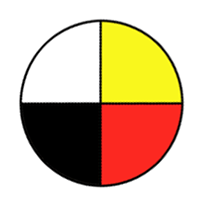Investigate properties of materials and methods of joinery used in structures.
CP, TPS
| (a) |
Identify problems to be solved relating to the properties of materials in structures (e.g., What is the purpose of the structure? What materials are appropriate for constructing the structure? What are appropriate methods of joinery?). |
| (b) |
Examine the properties of materials used in natural and human- built structures (e.g., beaver lodge, bird nest, wasps' nest, honeycomb, ant hill, tipi, house, marionette, circus float, umbrella, ladder, bridge, earthlodge, quinzhee, drink can, hockey puck, playground equipment, and toys). |
| (c) |
Compare the properties of materials used historically and currently throughout the world to construct structures such as houses, bridges, towers, and roads. |
| (d) |
Sort materials for use in constructing structures according to one or more physical properties such as strength, texture, colour, flexibility, and durability. |
| (e) |
Analyze how various similar and dissimilar materials can be joined (e.g., gluing, nailing, screwing, stapling, taping, Velcroing and tying) and identify the most appropriate methods for joining specific materials for an identified use. |
| (f) |
Use appropriate tools (e.g., hammer, nail, glue, and scissors) to cut, shape, make holes, sew, and assemble materials safely. |
| (g) |
Develop and carry out a plan, including making predictions, identifying variables, and recording relevant observations, to test the strength of various materials (e.g., straws, toothpicks, masking tape, string, cotton balls, wooden blocks, Styrofoam, cloth, clay, and spaghetti). |
| (h) |
Assess the suitability of various materials for constructing structures, including methods of strengthening those materials (e.g., adding more layers, tying or gluing together, triangulation, cross-bracing, and changing the shape of the materials). |
| (i) |
Examine the suitability of using recycled materials to construct structures (e.g., tires as highway surfacing, and reclaimed lumber or straw bales for houses). |







The book includes a table of contents and an index.

The book includes photographs, illustrations, a table of contents, a note on the symbols used in the book and an index.




